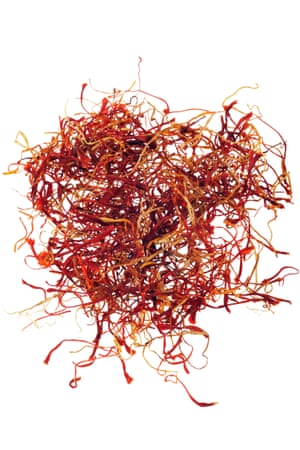Iran anticipates saffron sales will soar after lifting of sanctions
They say it brings a smile to your face. Saffron, king of all spices, is Iran’s red gold, and an ounce of it is even more expensive in some western supermarkets than the precious metal.
The lifting of sanctions against the country in mid-January is triggering a fresh demand worldwide as the spice is exported to the US for the first time in 15 years.
Saffron is a distinctive flavour in much Persian cuisine and has featured widely in recipes by some of the world’s most famous chefs, but its exports sank under a decade of sanctions as the west severed economic ties with Tehran.
Between 80% and 90% of the world’s saffron comes from Iran, but banking and trade restrictions meant Iranian companies faced huge challenges in exporting it abroad, particularly to the US and Europe.
Instead, sanctions created a large market for counterfeit, artificially coloured products, and other countries acted as intermediaries by importing the genuine spice from Iran and rebranding and exporting it to the wider world in their own name and at higher prices.

Mohammad Javad Rezaie, the head of Iran’s saffron exports development fund, has said that the first shipment will reach the US next week and predicted that the removal of sanctions and direct trade with Europe will boost its exports by 40% in the near future.
“After the implementation of the nuclear deal between Iran and [the west], a number of countries such as Spain want to directly buy saffron from Iran,” Rezaie told the semi-official Isna news agency.
“Under sanctions, saffron exports fell down significantly … which made it very difficult to send or receive foreign currency,” he said. “We’ve had a request from the US and the first shipment of saffron, weighed at 20kg, will be sent to the US for the first time in 15 years.”
Iranians believe saffron serves as a natural antidepressant and helps fight Alzheimer’s and cancer. It is usually ground and mixed with hot water before being added to rice used alongside a bowl of Persian stew, such as ghormeh sabzi, which is a mixture of sauteed herbs, kidney beans and lamb or beef. It is also generously used in sholeh zard, a rice pudding which people cook and hand out to neighbours and the poor on religious occasions.

